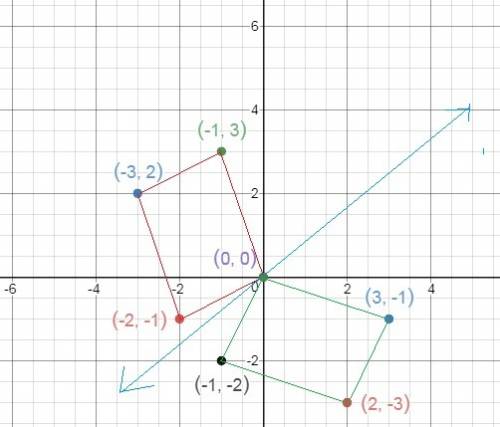
Mathematics, 07.10.2019 03:30 angel234wilcox
The vertices a(–2, –1), b(–3, 2), c(–1, 3), and d(0, 0) form a parallelogram. the vertices a’(–1, –2), b’(2, –3), c’(3, –1), and d’(0, 0) are the image of the parallelogram after a sequence of transformations. which sequence of transformations could produce the image from the pre-image?

Answers: 3


Another question on Mathematics

Mathematics, 21.06.2019 17:10
The graph of g(x) is a translation of y = which equation represents g(x)?
Answers: 1

Mathematics, 21.06.2019 19:30
Me. i can't figure out this question. give an explanation too. .
Answers: 1

Mathematics, 21.06.2019 19:40
Molly shared a spool of ribbon with 12 people. each person received 3 feet of ribbon. which equation can she use to find r, the number of feet of ribbon that her spool originally had?
Answers: 1

Mathematics, 21.06.2019 21:10
Aplane intersects a pris paralel to the base of the prism. the cross section is a polygon wth eight sides. how many sides does the base of the prism have? a. 10 b. 8 c. 7 d. 9
Answers: 1
You know the right answer?
The vertices a(–2, –1), b(–3, 2), c(–1, 3), and d(0, 0) form a parallelogram. the vertices a’(–1, –2...
Questions


English, 03.10.2019 06:40







English, 03.10.2019 06:40



History, 03.10.2019 06:40


Mathematics, 03.10.2019 06:40

Physics, 03.10.2019 06:40


Mathematics, 03.10.2019 06:40






